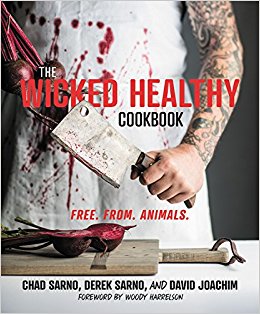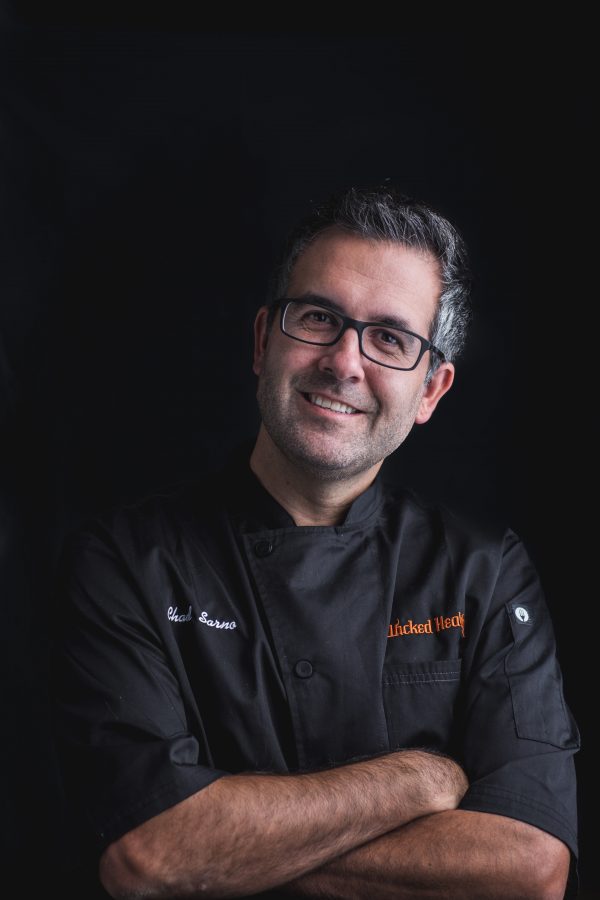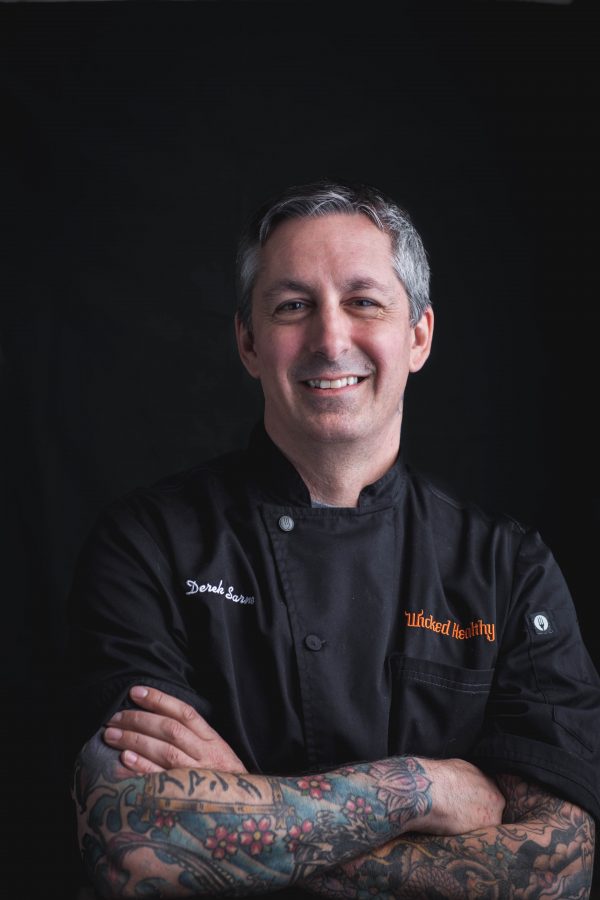
THE WICKED HEALTHY COOKBOOK: Free. From. Animals.
Chad Sarno, Derek Sarno, Dave Joachim Eva Kosmas Flores
Grand Central
May 8, 2018
$29.09/Hardcover
ISBN-13: 978-1455570287
Chad Sarno, Derek Sarno, Dave Joachim Eva Kosmas Flores
Grand Central
May 8, 2018
$29.09/Hardcover
ISBN-13: 978-1455570287
 CHAD SARNO is Vice President of Culinary at Good Catch Foods and cofounder of the Wicked Kitchen line of foods in Tesco. Chad also is an ambassador for Rouxbe, the world’s largest online cooking school, where he launched the Professional Plant-Based Certification course. He spent several years at Whole Foods Market as Senior Culinary Educator and media spokesperson for the Global Healthy Eating program. Before that, Chad launched a line of boutique restaurants in Istanbul, Munich, and London. He has been a contributing author to more than a dozen cookbooks, and if not in the kitchen he’s getting lost in his gardens.
CHAD SARNO is Vice President of Culinary at Good Catch Foods and cofounder of the Wicked Kitchen line of foods in Tesco. Chad also is an ambassador for Rouxbe, the world’s largest online cooking school, where he launched the Professional Plant-Based Certification course. He spent several years at Whole Foods Market as Senior Culinary Educator and media spokesperson for the Global Healthy Eating program. Before that, Chad launched a line of boutique restaurants in Istanbul, Munich, and London. He has been a contributing author to more than a dozen cookbooks, and if not in the kitchen he’s getting lost in his gardens.

DEREK SARNO is the Executive Chef and Director of Plant-Based Innovation for Tesco, the third-largest food retailer in the world. Derek is cofounder of the Wicked Kitchen line of foods in Tesco and cofounder of Good Catch Foods. He is also the former Senior Global Executive Chef at Whole Foods Market, where he catered all the company’s major executive leadership events and oversaw national recipe development. After culinary school, Derek owned several critically acclaimed restaurants and catering businesses. He spent a few years farming and spent some quality time learning to meditate and cook a variety of foods at a Tibetan Buddhist monastery. Derek has always loved to train squirrels in the ways of the ninja.

DAVID JOACHIM has authored, co-authored, or collaborated on more than forty cookbooks, including several award winners and bestsellers such as The Food Substitutions Bible and A Man, a Can, a Plan, a series of healthy cookbooks that has sold more than 1 million copies. He has been developing recipes for Whole Foods Market magazine since 2011 and co-writes a long-running column on food science in Fine Cooking magazine. He is the cofounder of Chef Salt artisan salt seasonings, and his favorite cooking tool is a leaf blower.
THE WICKED HEALTHY COOKBOOK takes badass plant-based cooking to a whole new level. The chefs have pioneered innovative cooking techniques such as pressing and searing mushrooms until they reach a rich and delicious meat-like consistency. Inside, you’ll find informative sidebars and must-have tips on everything from oil-free and gluten-free cooking (if you’re into that) to organizing an efficient kitchen.
Celebrating the central role of crave-able food for our health and vitality, Chad and Derek give readers 129 recipes for everyday meals and dinner parties alike, and they also show us how to kick back and indulge now and then. Their drool-inducing recipes include Sloppy BBQ Jackfruit Sliders with Slaw, and Grilled Peaches with Vanilla Spiced Gelato and Mango Sriracha Caramel. They believe that if you shoot for 80% healthy and 20% wicked, you’ll be 100% sexy: That’s the Wicked Healthy way.